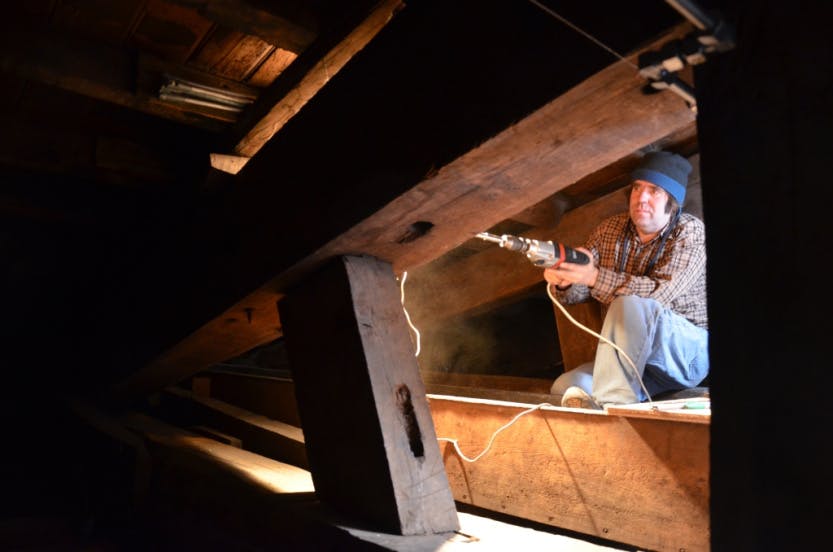I love roofs. Not only are they among the best-preserved parts of our palaces, they also hold secrets within them, and can reveal information that isn’t contained in any documents. Occasionally we are given the luxury of undertaking scientific research which answers questions about the history and evolution of the palaces, and for the past few years, the curators have commissioned a series of tree-ring surveys of the roofs at Hampton Court Palace, with spectacular results.
Dendrochronologists, as they are grandly titled, identify suitable oak or pine, ideally with the outer rings or sapwood, or even bark-edge, and at least 40 or 50 growth rings. Cores are then drilled, and the results are cross-matched with other sequences to yield a date of felling, and can also give an approximation of where the timber was grown.
In the last few years, we have dated the Tennis Court roof and the buttery roofs successfully; in fact Hampton Court always seems to yield good results, and so whenever we conduct repairs, we take the opportunity to learn more about the historic fabric in this way.
The latest roof to receive this treatment is the Great Watching Chamber. It is one of our most important Tudor roofs. The finest is, of course, the Great Hall, but the others, which are all hidden above ceilings are no less impressive in their own way for being technically innovative and made of massive baulks of timber which are still in amazing condition after 500 years.
The Great Watching Chamber roof needed to be strong – it had to cross a wide span without braces and carry the flat ceiling below with its nailed-on bosses and the heraldic roundels which people admire so much. The result, probably devised by a clever carpenter was a ‘king-post’ roof – highly innovative and made of massive oak beams with a large central upright.
The surviving building accounts tell us that it was constructed in July 1535 from timbers sourced from Banstead Wood in Surrey. But could this be true? King-post roofs don’t appear for another hundred years. Tree-ring dating would have the answer, and the cores produced excellent rings which gave us a precise date – 1535!
They also showed us that the trees were cut down and the timber used almost immediately. Our work isn’t finished either – in the early 19th century, new trusses were introduced to carry the heavy lead on the roof, this time made of imported Prussian pine. These have just been cored and we’re still awaiting the results, but if we get a firm date, then we will have added another piece in the immense Hampton Court Palace jigsaw puzzle.
Dr Lee Prosser
Curator, Historic Buildings
More from our blog

The Lost Tiltyard Tower at Hampton Court Palace
15 December 2015
Archaeologists at Hampton Court Palace have uncovered the remains of one of the palace’s famous five lost Tiltyard Towers. The discovery of this green-glazed tile floor has solved a three-hundred-year-old mystery.

Objects Unwrapped: Tudor Leather Mache Putto from Hampton Court
07 December 2015
Putti are representations of small male children often with wings, found in religious and secular artwork. They were a popular form of decoration during the Renaissance.

Unearthing two early Tudor buildings at Hampton Court Palace
15 March 2019
In 2017, two early Tudor buildings were unexpectedly discovered in a small trench excavated during conservation works on a set of historic railings. The bricks used were dated to Cardinal Wolsey's building phase, (1515-1529), or possibly even slightly earlier.

